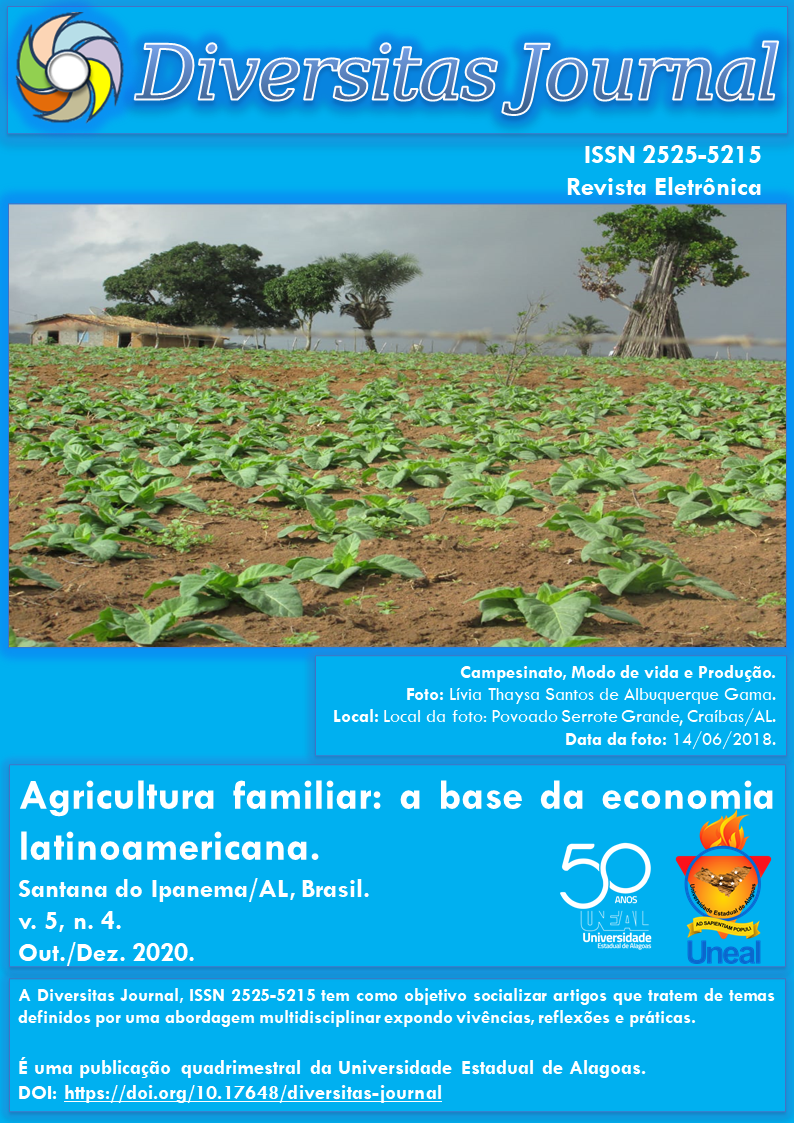Identificação de fungos queratinofílicos obtidos do solo de recintos de mamíferos selvagens
DOI:
https://doi.org/10.17648/diversitas-journal-v5i4-1363Abstract
ABSTRACT: Soil is the main environment where most fungi occur and is of great importance for their biological activities. This habitat especially houses keratinophilic fungi, which are part of a group of microorganisms capable of producing enzymes that degrade keratin, especially dermatophytes, mycosis agents in humans and animals, some of which are responsible for opportunistic infections. Based on the above, this study aimed to detect the occurrence of keratinophilic fungi in soil of enclosures that house wild mammals. For this, 395 soil samples were collected from the Parque Estadual de Dois Irmãos (PEDI), located in the city of Recife - PE. The samples were processed using the soil suspension technique and cultured in Petri dishes containing Sabouraud Dextrose Agar plus chloramphenicol. The identification of the filamentous fungi was carried out through microculture in lamina, based on the observation of macro and micromorphological characteristics of the colonies. As a result, 233 Colony Forming Units (CFU) were obtained, of which 85 (36.5%) came from the soil that harbored mammals of the order Carnivora, followed by 84 CFU (36%) on soil of mammals of the order Primates. Regarding the identified fungi, there was a higher occurrence of Microsporum gypseum with 123 CFU (52.8%), followed by Chrysosporium sp. with 28 UFC (12.0%) and Fusarium sp. with 10 UFC (4.30%). Animals that live in contaminated enclosures can be asymptomatic carriers of many fungal diseases, acting on the transmission to other animals and humans. As a preventive way, there is an improvement in hygienic and handling conditions.
KEYWORDS: fungi, dermatophytes, mycoses, wild animals.
Metrics
Downloads
Published
How to Cite
Issue
Section
License
Copyright (c) 2020 Alex Câmara Aragão, Rodrigo José Nunes Calumby, Jackelyne Soares de Oliveira, Juliane Cabral Silva, Isaac Manoel Barros Albuquerque, Maria Anilda dos Santos Araújo

This work is licensed under a Creative Commons Attribution 4.0 International License.
The Diversitas Journal expresses that the articles are the sole responsibility of the Authors, who are familiar with Brazilian and international legislation.
Articles are peer-reviewed and care should be taken to warn of the possible incidence of plagiarism. However, plagiarism is an indisputable action by the authors.
The violation of copyright is a crime, provided for in article 184 of the Brazilian Penal Code: “Art. 184 Violating copyright and related rights: Penalty - detention, from 3 (three) months to 1 (one) year, or fine. § 1 If the violation consists of total or partial reproduction, for the purpose of direct or indirect profit, by any means or process, of intellectual work, interpretation, performance or phonogram, without the express authorization of the author, the performer, the producer , as the case may be, or whoever represents them: Penalty - imprisonment, from 2 (two) to 4 (four) years, and a fine. ”


















